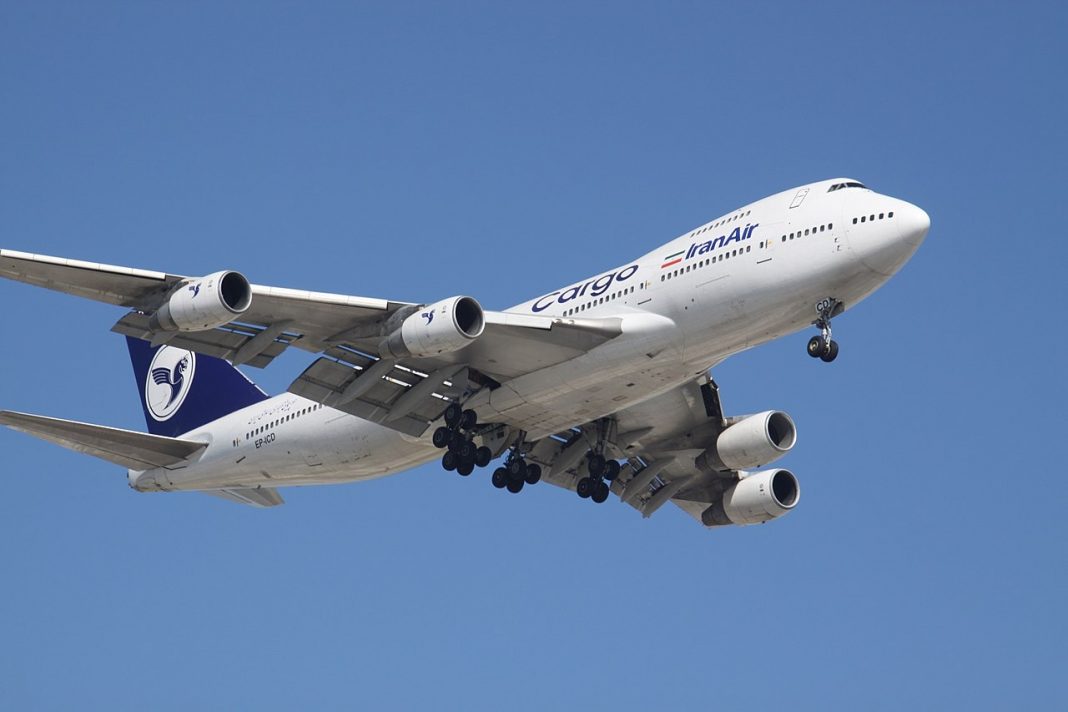If you thought flying long-haul with four hundred other people made for a pongy cabin, spare a thought for the pilots of an Iran Air Boeing 747 flying a flock of sheep to Doha. If the smell wasn’t enough to knock you out, the flight potentially got worse. There was an engine shutdown, and the plane was diverted to Tehran. Alternatively, the pilots might have viewed it as a lucky break.

An unplanned weekend in Tehran for a flock of sheep
A report in The Aviation Herald alerted us to this. On Saturday, October 17, an Iran Air Boeing 747-200 (registered as EP-ICD) was operating a flight flying live sheep from Adana in Turkey to Doha. While in Tehran’s vicinity, there was an undisclosed problem with one of the plane’s four engines. That engine was shut down, and the plane diverted to Tehran. It landed safely with no reported injuries to crew or sheep.
What’s caught people’s attention here is what happened to the sheep. According to The Aviation Herald, the sheep were offloaded. They loitered around the airport for over two days until the engine problem was sorted. The report notes there was no suitable aircraft to transfer the sheep onto. That’s understandable. Qatar Airways has a flight in and out of Tehran every day but whether CEO Akbar Al Baker wants them despoiling his nice carpet is another matter altogether.
So the sheep spent the weekend at Tehran Airport, trying to find something to eat and probably enjoying a reprieve from their inevitable end once in Doha. We’ve included a couple of social media posts showing the sheep doing nothing much at all over the weekend in Tehran.
Not a sight you see every day, an IranAir flight carrying sheep from Turkey has had to make an emergency landing releasing the sheep around the runway. pic.twitter.com/KMVqPq9kyw
— Daniel Rád (@DanielKRad) October 18, 2020
Iran Air’s last surviving Boeing 747 down to flying live animals to market
This particular plane, EP-ICD, is Iran Air’s last surviving Boeing 747. According to Planespotters, it is over 32 years old. It has always operated as a cargo plane, having variously flown for Martinair Holland, Qantas, Ansett Worldwide, and Ankair before ending up with Iran Air in 2008.
Recently, Iran Air announced it was auctioning off a number of its older planes, including some 747s. EP-ICD was not on the sale list. That’s probably a good thing.
We all know airlines carry cargo, and that cargo includes foodstuffs. Typically, when we think of meat exports, we imagine it’s slaughtered, cut up, vacuum sealed, chilled, and tucked away in a box in the plane’s belly.
CAUTION: SHEEP! Iran Air Boeing 747-200 (EP-ICD, built in 1988) diverted to Tehran-Mehrabad airport after an en-route…
Publisert av Aeronews Mandag 19. oktober 2020
A niche market for live animal exports by air
But some markets, including many across the Middle East and North Africa, prefer live animals that can be slaughtered shortly before consumption. There is a big live animal import market into places like Abu Dhabi and Doha. The bulk of it comes via ship.
That’s not always practicable, particularly if the animals are a long way from a seaport. Sheep, in particular, are liable to stress while traveling and this dramatically increases their mortality rate. Because sheep are lighter and smaller than comparable export animals, say cattle or goats, air travel can be a viable way to get them to market with a minimum of stress and fuss.
The bulk of live sheep exports by air comprise lighter lambs, as opposed to heavier wethers. It’s an interesting and little-explored corner of the aviation industry.
After getting the engine problem sorted in Tehran, the sheep got reboarded back on EP-ICD to take their final flight before ending up as someone’s tasty dinner. It’s not known if the sheep were boarded in a 2020 style safe manner and were appropriately spaced out in-flight. Their spokesperson did not respond to requests for comment.
[ad_2]
Source link


